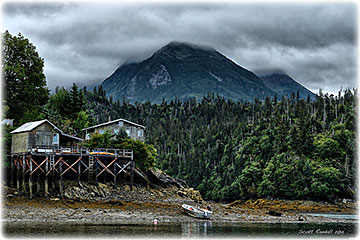 |
Explore Alaska Dining in Anchorage Plan Your Visit Exploring Anchorage Short Trips Extended Trips Traveling to Anchorage Going off the Grid Pre-Conference Weekend Events |
Going off the Grid
National Parks  Alaska offers the opportunity to travel into vast regions that bear no trace of modern civilization. For those Transducers 2015 attendees with a strong sense of adventure, this may be a rare chance to bring back unique and unforgettable impressions. A good starting point are the national and state parks. Denali has a 90 mile shuttle bus that can transport backpackers deep into the park. Some parks offer rentals of remote cabins. Other parks may have virtually no infrastructure at all.
Alaska offers the opportunity to travel into vast regions that bear no trace of modern civilization. For those Transducers 2015 attendees with a strong sense of adventure, this may be a rare chance to bring back unique and unforgettable impressions. A good starting point are the national and state parks. Denali has a 90 mile shuttle bus that can transport backpackers deep into the park. Some parks offer rentals of remote cabins. Other parks may have virtually no infrastructure at all.
Driving A look at the road map shows that there are only a few highways in Alaska, but don't underestimate the substantial distances. Homer, a major fishing town at the tip of the Kenai Peninsula and popular destination among tourists, is 4 1/2 hours, Denali National Park is also 4 1/2 hours and Fairbanks is nearly 7 hours from Anchorage. The highway north of Fairbanks is not paved and most rental cars are not allowed to drive there. A trip to Prudhoe Bay on the Arctic Ocean would require one day of continuous driving. Dents, flat tires and cracked windshields are common on gravel roads. Flying The sparseness of roads, the long distances and the rough terrain make flying a necessity rather than an extravagance for reaching remote locations. This type of travel, however, is an adventure in itself and can be a highlight of your Alaska experience. Anchorage has the largest airport for float planes, which can be booked for everything from a short flightseeing trip to an extended drop-off and pick-up at a remote lakeside cabin. Safety If you venture out on your own, please stay safe. This site cannot provide detailed advice, instead please consult the literature on backcountry travel and talk to a park ranger, professional guide or Alaska travel expert. Here are just a few thoughts:
|